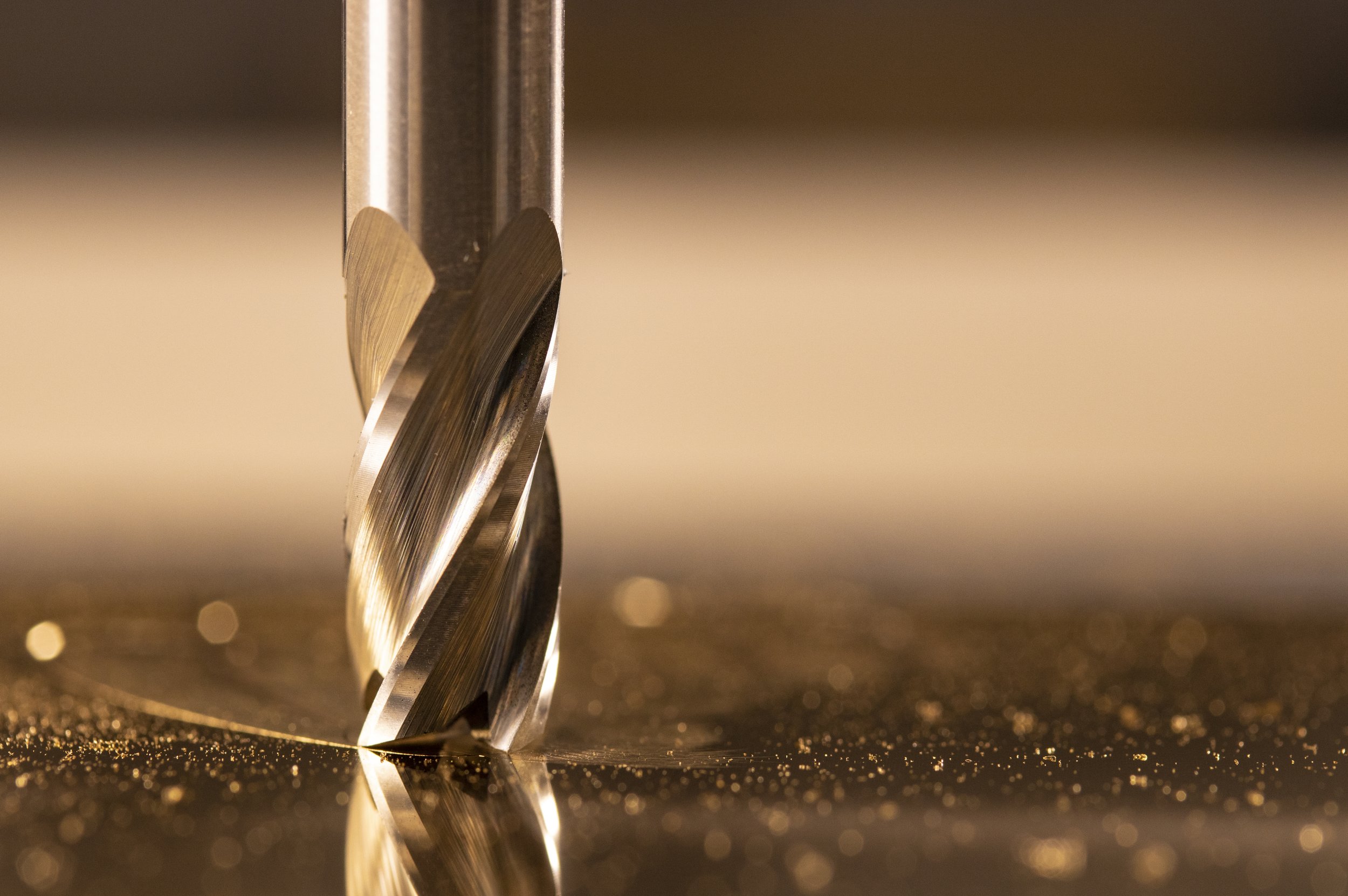Chip Management Strategies
Breaking tools or wrecking parts due to poor chip management can cost you time and money. Optimizing for chip load is crucial to helping prevent this, however during a job it’s inevitable that chips are going to build up. Even if you have the perfect chip load programmed, you’ll need to manage your chips during your jobs. Here are our top tips to manage chips with desktop CNCs (or any CNC machine for that matter) and decrease the chances of breaking end mills, having issues with your machine, or getting poor surface finishes.
1/4” end mill cutting a facing pattern on brass 360.
Use a Vacuum Attachment & Shop Vac
If you’re machining wood with a Bantam Tools milling machine, we strongly recommend using either the Bantam Tools Desktop CNC Vacuum or the Bantam Tools Explorer™ CNC Vacuum Attachments. When it comes to milling fine-dust or staticy materials, Bantam Tools milling machines are fully enclosed, which will help you keep your workspace clean. But this also means that the fine dust can get into the components of your machine and this can cause issues such as binding, conductivity issues, and more. While staticy debris (you’ll typically run into this with Derlin and HDPE) get stuck all over the frame of your machine. In short, using vacuum attachments decreases the wear and tear on your machine and it cuts down on your clean-up time.
Using an Air Blaster Attachment
An air blaster is a great accessory to use if you’re machining deep pockets, holes, slots, or any other operations where you’re going to have chips getting built up. This kind of accessory enables you to move the chips out of the way of your cutting path, so that the tool isn’t cutting both the stock and the chips. When this happens the tool and chips can overheat and are more likely to cause chip welding.
Pro tip: If you have a feature like a slot that’s 1/4” wide, use a 1/8” tool. This ensures that your chips are being evacuated properly. Combine this strategy with an accessory like the Bantam Tools Air Blaster and you’ll be able to prolong your tool life and get better quality finishes on your parts.
Using Coolant
Although Bantam Tools milling machines utilize dry machining strategies and don’t require coolant, we’d be doing you a disservice if we left coolant off this list. Coolant is typically used with industrial machines—like the ones we have on Bantam Tools HQ’s shop floor. When you’re machining at a slower cutting speed (like you would for ferrous materials like steel or titanium), coolant lubricates the cutting process, making it easier to cut through material. On the flip side, if the operator has programmed high cutting speeds, the coolant prevents the material from getting too hot. Additionally, coolant always keeps the cutting path free of chips and debris.
Regular Cleaning & Maintenance
Our philosophy is that a clean mill is a happy mill. If you’re running a long job or multiple jobs in a row, make a point to regularly vacuum out the machine—even if you’re using a vacuum attachment. If you’re working with our Bantam Tools milling machines, pay special attention to the limit switches on each axis, bearings, and rods. Use a brush to clear away the build up . We also recommend doing periodic inspections of your machine to ensure that chips or fine dust aren’t building up in unwanted areas.
Note: Check out our Support Center for more cleaning and maintenance tips for your Bantam Tools milling machine.
For the latest Bantam Tools news, sign up for our newsletter. You can also follow us on LinkedIn, YouTube, Instagram, Facebook, or Twitter. If you’re interested in adding a Bantam Tools machine to your workflow you can order directly from our online store or request a quote.

